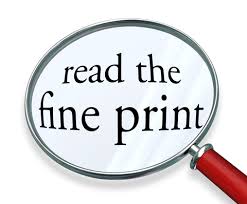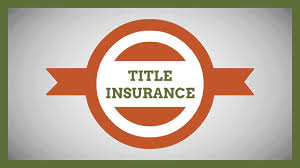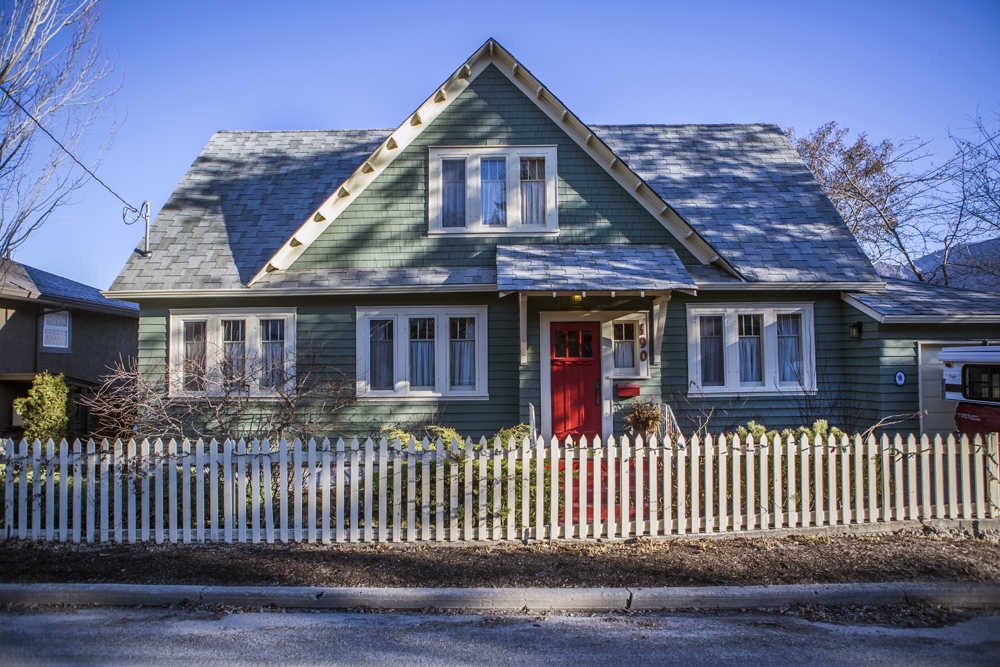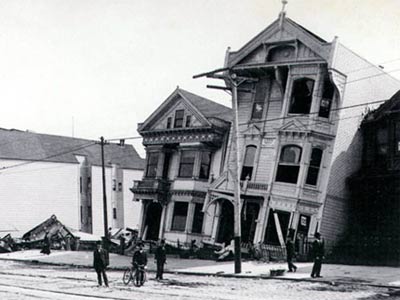Home insurance - Explained
Posted by Steve Harmer on Thursday, January 14th, 2016 at 11:41am.
Buying Home Insurance
 As a homeowner, you need to insure your house for replacement costs so that in the event of serious damage or destruction you have adequate coverage. Be sure to keep your home insurance current by reporting material changes or upgrades.
As a homeowner, you need to insure your house for replacement costs so that in the event of serious damage or destruction you have adequate coverage. Be sure to keep your home insurance current by reporting material changes or upgrades.
Bricks, Mortar and So Much More
Home ownership is one of the largest financial investment decisions Canadians make. Your home may be your biggest source of equity. No matter how well built, your home is vulnerable to fire, vandalism and other types of damage and destruction.
What Is Covered
Coverage can vary from one insurer to the next, so it’s important to select a policy that suits your specific needs. Home insurance covers the dwelling, contents and personal liability of you (the policyholder), your spouse or partner, and your children. The policy also covers:
- Dependants under the age of 18
- Dependants who are students enrolled and actually attending a school, college or university and living in the household or temporarily living away from the insured principal residence
If you share your home with a friend or relative, or rent out part of your residence, you must notify your insurance representative.
Home insurance also includes coverage for additional living expenses in the event that you are temporarily unable to live in your home due to an insured loss in certain circumstances.
Contractual Obligations
 Unlike auto insurance, home insurance is not mandatory by law. However, most banks or mortgage holders will insist that you purchase home insurance – and show proof that you have home insurance – before they’ll lend you money to buy a home. They will ask to be named as the mortgage holder on your policy.
Unlike auto insurance, home insurance is not mandatory by law. However, most banks or mortgage holders will insist that you purchase home insurance – and show proof that you have home insurance – before they’ll lend you money to buy a home. They will ask to be named as the mortgage holder on your policy.
It’s your responsibility to report any changes to your property. Contact your insurance professional before you :
-
Renovate your home
-
Installing a pool or spa
-
Setting up a home-based business, such as a daycare
-
Leasing all or a portion of your property
-
Purchasing jewellery or art.
Keeping your insurance company informed with an accurate and up-to-date description of your home and contents can help speed up the claims settlement process after a loss.
4 Tips for Insuring Your Home and Contents
If you can’t afford to replace absolutely everything you own after an unforeseen event, you need home insurance. Consider these tips.
-
Insure for rebuilding costs.
-
With severe weather on the rise, confirm accurate replacement value.
-
Review your home inventory each year when you renew your policy.
-
For high-value jewellery or fine art, consider a separate endorsement.
Even a partial loss – such as from a break-in, theft of multiple possessions and related damage – can potentially cause financial hardship. Home insurance protects you from having to pay all at once to replace what was lost at what is often an emotionally difficult time.
Recreational Properties
 Insurance for seasonal or secondary properties works differently than insurance for your primary home. This is because these properties are often occupied only on weekends, for weeks or months at a time. Seasonal properties are used primarily for recreation at certain times of the year or month. Secondary residences are typically used all year long.
Insurance for seasonal or secondary properties works differently than insurance for your primary home. This is because these properties are often occupied only on weekends, for weeks or months at a time. Seasonal properties are used primarily for recreation at certain times of the year or month. Secondary residences are typically used all year long.
How and when you use your recreational property is important to your insurer. You can typically list your vacation home as a secondary or seasonal location on your existing policy.
How Is The Property Used?
Insurers consider:
- how frequently a property is used
- how often it is occupied
- if it is rented.
Ideally, your recreational property can be listed on your home insurance as a secondary or seasonal location. You can also have property insurance as a separate, stand-alone policy.
Insuring Named Perils Only
Due to the risks associated with part-time occupation, recreational property insurance is generally provided on a named perils policy instead of a comprehensive or all risks policy.
Named perils policies cover specific risks such as fire, explosion or smoke damage. Coverage for certain risks, such as water damage or vandalism, may be more difficult or expensive to arrange, due to part-time occupancy. For example, if a water pipe bursts or if vandals break in while your property is vacant, damage is likely to be more severe because it could take longer for it to be discovered.
Common Exclusions
 Common exclusions to secondary and seasonal home insurance policies include sewer backup and damage to, or loss of:
Common exclusions to secondary and seasonal home insurance policies include sewer backup and damage to, or loss of:
- fences
- food in a freezer
- garden equipment
- outdoor plants
- trees and shrubs.
Remember, every policy has limits for watercraft. If you have a boat at your seasonal or secondary residence, speak to your insurance representative to make sure you have adequate coverage.
Even a “fixer-upper” of low value still requires third party liability coverage. This protects you if someone is hurt on your property or if you start a fire that accidently spreads to neighbouring properties.
3 Additional Coverage's to Consider
-
Contents. Some insurance packages automatically include contents up to a certain percentage of the dwelling limit. This applies to contents permanently kept at the vacation home. Anything you take back and forth (such as clothing) is covered by your primary home insurance policy. If inadequate, you can buy additional coverage.
-
Detached private structures. Some insurance packages include limited coverage for outbuildings such as boathouses, garages or sheds. This is generally a percentage of the dwelling limit. If inadequate, you can buy additional coverage.
-
Replacement cost. This covers the cost of repairing an item or replacing it with a new one, without any deduction for depreciation.
 5 Key Facts to Know about Residential Title Insurance
5 Key Facts to Know about Residential Title Insurance
- Typically, you purchase residential title insurance when you buy your home.
- You can buy a residential title insurance policy at any time while you own a property.
- Talk to your lawyer or insurance representative to understand your coverage options.
- A one-time premium covers the insured property as long as you own it.
- If your property ownership passes to a spouse, child or heir, it may be possible to extend your title insurance to them.
What Risks Will It Cover?
Residential title insurance can protect you against issues that could affect your ability to sell, lease or mortgage your property. It can provide coverage for the following:
- An unforeseen defect in your title ownership.
- Negligence or errors made by your lawyer relating to title risks.
- Unpaid utilities, mortgages, taxes or condo/strata maintenance fees – these are known as liens.
- Fraud, survey or records errors.
- A pre-existing outbuilding that must be removed because it encroaches on a neighbouring property.
- The gap period between when a property purchase is finalized or closed and when the title is officially registered with the government.
As with all forms of insurance, there is much to consider when you purchase title coverage. When you buy a home and insure your property, title insurance can help you manage risk. Consult your lawyer or insurance representative to learn more about the value of title insurance.
5 Tips for Insuring a Heritage or Historically Designated Property
 Insurers look for well-maintained properties with good claims records. Whether you are buying or renovating a heritage home, you can mitigate risk. Consider the following.
Insurers look for well-maintained properties with good claims records. Whether you are buying or renovating a heritage home, you can mitigate risk. Consider the following.
- Shop around. Find an insurer who understands the specific risks associated with a heritage property. Consider the claims settlement process and the deductible amounts being offered.
- Reduce risk. Take steps to protect your property and reduce the chance of making a claim. The cost of insurance is directly related to risk; by reducing risk, you may be able to lower your premiums. To reduce risk, consider the following:
- Install smoke detectors and centrally monitored burglar and fire alarms.
- Ensure your property is compliant with relevant building codes.
- Replace knob-and-tube wiring. While some insurance companies will not insure properties with knob-and-tube, others may allow you time to have it removed. Still other companies may offer coverage only after a safety inspection.
- Update and/or upgrade your roof, heating and plumbing systems. Forced air, gas and electric heat; copper and PVC plumbing; and sewer backflow valves are modern options that reduce risk.
- Provide proof of an adequate fire-break if your property is semi-detached or a row house.
- Inspect and maintain your property’s oil tank, fireplace and/or wood burning stove
- Keep accurate records. Detailed information helps an insurer make an informed decision. In an off-site location, store the following:
-
Copies of by-laws and/or ordinances regarding zoning, demolition, repair and/or construction of your property.
-
Information on the type of historic classification – listed, designation or heritage conservation easement – assigned to your property.
-
Information about your region’s planning requirements for heritage properties and for “infills” or new construction in heritage districts.
-
Current maintenance and renovation records – for example, upgraded plumbing or replaced roofing – as well as photographs of all aspects of your property, including interiors, exteriors and outbuildings.
-
Document unique characteristics. Features such as hand-carved elements, antique chandeliers, plaster walls and mouldings set heritage properties apart from modern dwellings. Record and photograph these details so your insurer can accurately assess the replacement cost in the event of a loss.
-
Buy sufficient insurance. Insurers may not offer guaranteed replacement cost coverage for a heritage property, even as a policy add-on. It’s your responsibility to ensure adequate coverage to meet heritage regulations. Don’t reduce coverage to save a few dollars – coverage should reflect the true value of your property.
When a Heritage Property Is Damaged
 After a loss, your insurer determines the replacement cost or what it will cost to rebuild your property. Determining the replacement cost may be challenging due to the property’s building materials, cherished features and historic significance. Factors that may affect replacement cost include:
After a loss, your insurer determines the replacement cost or what it will cost to rebuild your property. Determining the replacement cost may be challenging due to the property’s building materials, cherished features and historic significance. Factors that may affect replacement cost include:
-
Planning approvals. There are often layers of bureaucracy involved in repairing or rebuilding a heritage property. Because of lengthier approval processes, your insurer may pay for your outside living arrangements for a longer period of time than with a non-heritage property.
-
Appraisal expertise. To adequately assess your property, a qualified professional with heritage property expertise must do the appraisal.
-
By-laws. Generally, a heritage property must be rebuilt on the original site, to its original occupancy, with building materials equivalent to what was used at the time it was built. It’s your responsibility to ensure repairs conform to local heritage requirements.
-
Claims settlement costs. Additional time for approvals and repairs may contribute to a lengthy claims process.
-
Distinctive features. Due to the craftsmanship typically associated with heritage properties, specialty contractors and building materials may be necessary.
-
Contaminants. Heritage properties may contain materials now known to be contaminants, such as asbestos. In such a case, special disposal must be arranged, which adds to the cost of the claim.
